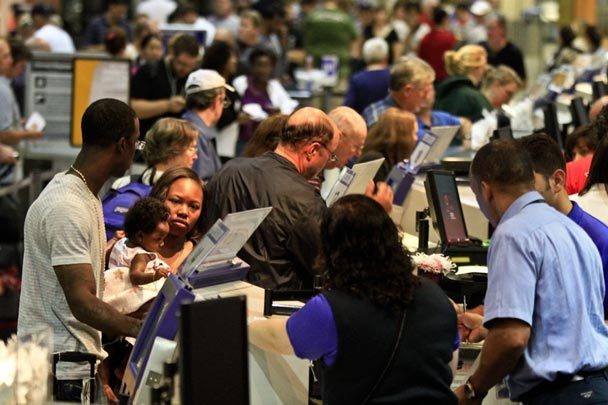
The failure of a single piece of equipment in Arizona ignited a massive blackout that left nearly 6 million people without power, baffling utility officials and highlighting the vulnerability of the U.S. electrical grid.
Authorities in Arizona said Friday that safeguards built into the system should have prevented the breakdown at a substation from cascading across Southern Arizona and into California and Northern Mexico.
They didn't, and the resulting instability led to the sudden shutdown of the San Onofre nuclear-power plant, about 50 miles north of San Diego, cutting off power to a large swath of Southern California.
"We lost all connection to the outside world," said James Avery, San Diego Gas & Electric's senior vice president of power supply. "This happened in a matter of seconds."
Energy experts and utility officials agreed the breakdown was troubling.
"We're struggling," said Daniel Froetscher, vice president of energy delivery for Arizona Public Service (APS), the largest electricity provider in Arizona. "We have to take a hard look at the system design and figure out exactly what happened. ... We don't know the underlying causes."
Among other concerns, some experts said the failure of safeguards suggest the potential for a saboteur to take down a regional power system.
Such incidents "remind us that on a day-to-day basis we rely on a very complicated electrical system," said Sarah Ladislaw, a senior fellow with the Center for Strategic and International Studies who specializes in energy security.
An APS worker was switching out a capacitor, which controls voltage levels, outside Yuma, Ariz., near the California border. Shortly after, a section of a major regional power line failed, eventually spreading trouble further down in California and later Mexico, officials said.
And the lights began to go out in a border region of about 6 million people.
The outage knocked out traffic signals, causing gridlock on roads in the San Diego area. More than 2 million gallons of sewage spilled into the ocean off San Diego, closing beaches in the nation's eighth-largest city.
But no injuries or major crimes related to the blackout were reported, San Diego County officials said, although vandals shattered the windows of one taco shop and there were scattered complaints of loud parties.
A local think tank, the National University System Institute for Policy Research, estimated the outage cost the San Diego-area economy more than $100 million.
On both sides of the U.S.-Mexico border, many had to spend the night struggling to fall asleep in the high temperatures.
Power in most areas was restored by 3:30 a.m. Friday, less than 12 hours after the outage began and far more quickly than officials had initially expected. But they said the electrical grid was still "fragile" and urged residents to conserve electricity this weekend.
In San Diego, officials with the Metropolitan Transit System said trolleys and buses were up and running, although there were some delays.
Lindbergh Field, which had been all but shut down Thursday, experienced significant delays Friday. Several airlines canceled flights as problems from the outage lingered.
Federal and state investigators will try to determine what caused the blackout and how future problems can be prevented. If regulatory violations are found, the government could issue fines of up to $1 million a day for every violation, officials said.
Among the questions is why safeguards to keep power flowing appeared at first to work. There was a roughly 10-minute gap between the time the power line failed and customers lost electricity, said Daniel Froetscher, vice president of energy delivery for Phoenix-based APS. The line has been "solid, reliable" with no history of problems, Froetscher said.
Material from The New York Times is included in this report.



Reader Comments
to our Newsletter